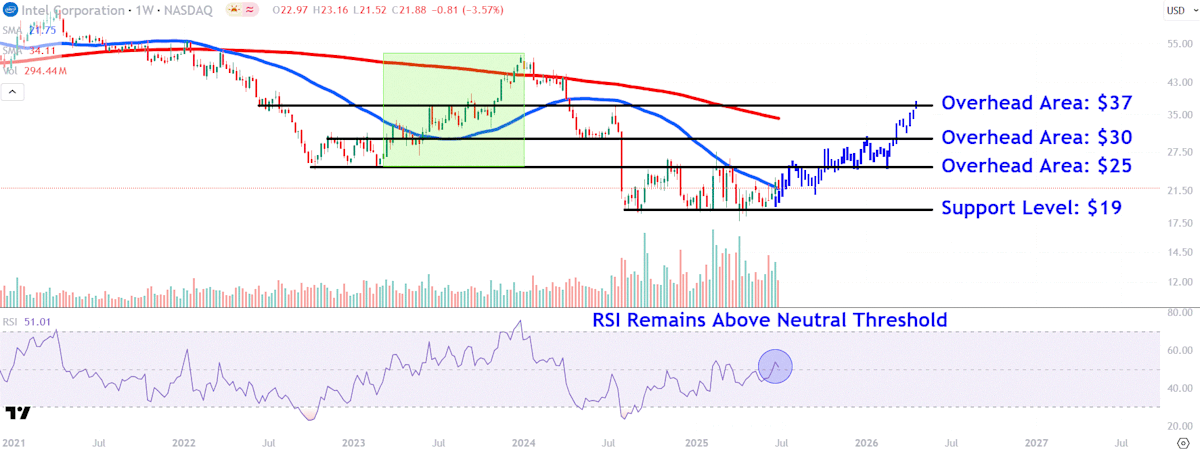Intel, a bellwether of the semiconductor industry, is at a critical juncture as its new CEO weighs significant shifts in its manufacturing strategy. This pivotal decision could have far-reaching implications for the company’s competitive positioning and, consequently, for Intel stock performance.
Evaluating Intel’s Manufacturing Strategy
The core of the debate revolves around whether Intel should continue to primarily manufacture its own chips or increasingly outsource production to other foundries, such as Taiwan Semiconductor Manufacturing Company (TSMC) or Samsung. This decision impacts everything from cost structure to technological leadership.
The Case for Internal Manufacturing
Maintaining in-house manufacturing capabilities offers Intel greater control over its chip designs and production processes. This vertical integration has historically been a source of competitive advantage, allowing for tighter integration between design and manufacturing. “Retaining control over our intellectual property and manufacturing processes is paramount to our long-term success,” asserted a senior engineer at Intel, during a recent industry conference.
The Appeal of Outsourcing
However, outsourcing chip production could offer significant cost savings and access to cutting-edge manufacturing technologies. Companies like TSMC and Samsung have invested heavily in advanced process nodes, potentially giving them an edge in producing smaller, more powerful, and more energy-efficient chips. According to a recent analysis by Gartner, outsourcing could reduce Intel’s capital expenditures by as much as 15% over the next three years.
Potential Impact on Intel Stock
The market’s reaction to the new CEO’s decision will likely be significant. A move towards greater outsourcing could be viewed positively by investors seeking short-term cost reductions and improved profitability. However, concerns about long-term competitiveness and reliance on external suppliers could dampen enthusiasm. A recent survey of institutional investors showed a split opinion, with 45% favoring increased outsourcing and 55% preferring continued internal manufacturing.
Financial Implications
The financial implications of either strategy are substantial. Internal manufacturing requires significant capital investment in new fabs (fabrication plants) and equipment. Outsourcing, on the other hand, shifts capital expenditures to operating expenses but introduces new risks related to supply chain management and intellectual property protection. A spokesperson for the Ministry of Technology confirmed that they are closely monitoring the situation given the potential impact on the global semiconductor supply chain.
Competitive Landscape
Intel’s competitors, including AMD and NVIDIA, have largely embraced outsourcing, allowing them to focus on chip design and marketing. This has enabled them to rapidly adopt new manufacturing technologies and gain market share in key segments, such as high-performance computing and gaming. According to a 2023 report by the Semiconductor Industry Association, companies that utilize a hybrid manufacturing model (combining internal and external production) have shown an average revenue growth rate 8% higher than those relying solely on internal manufacturing.
Challenges and Opportunities Ahead
The new CEO faces a complex decision with no easy answers. Balancing the need for cost efficiency with the desire to maintain technological leadership will be crucial. The company must also navigate a rapidly evolving geopolitical landscape, as governments around the world seek to bolster their domestic semiconductor industries. “This represents a fundamental strategic inflection point for Intel,” stated Dr. Anya Sharma, a leading semiconductor analyst at TechInsights Research. “The choices made now will define the company’s trajectory for the next decade.”
Ultimately, the success of Intel’s new manufacturing strategy will depend on its ability to adapt to changing market conditions, invest in innovation, and forge strong partnerships with both internal and external stakeholders. The path forward requires a delicate balance of strategic vision, operational excellence, and a willingness to embrace new approaches.


